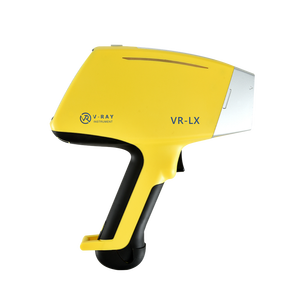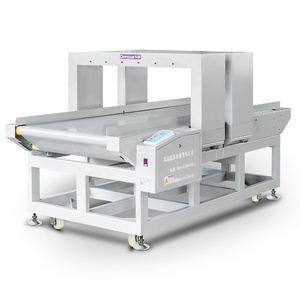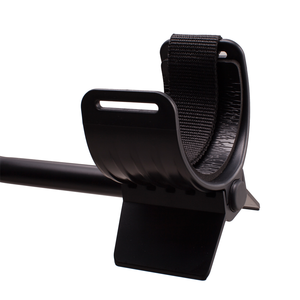
All categories
Featured selections
Trade Assurance
Buyer Central
Help Center
Get the app
Become a supplier

(1962 products available)


















































Metal detectors could invariably prove their worth in the industry of safety and quality control, as these are required for the integrity and security of the product. Detection of metal contaminants would have, logically to say, gone through Copyright. Test after test was conducted on food products, pharmaceuticals, and other wares such as textiles and plastics. Very advanced modern sensing technologies are being applied by large metal detectors to detect the slightest amount of metals so that unsafe occurrences can be prevented and industry standards can be maintained. Thus, that has continued to increase the demand for perfect large metal detectors, thus in turn calling on the industries to deliver advanced protection and quality assurance procedures.
There are various kinds of large metal detectors there for specific applications and particular environments in any part of this world. The most common types must encompass balanced coil systems, pulse induction, and magnetic field types of detectors. While the balanced coil systems are largely fitted for best application in food processing, owing to their amplified sensitivity and accuracy for detecting ferrous and nonferrous metals, the pulse induction detectors on metal contaminations in the areas of mining and recycling find their greatness in having a deep response in detecting metal objects with almost no interferences. Magnetic field detectors are very important in the pharmaceutical and textile industries, and they demand precision and reliability. The trunk of large metal detectors varies with different designs, each one uniquely tailored toward various operational requirements to optimize their applicability.
Industrial Metal Detectors have various functions and features for their applicability in industries. For example, they offer real-time detection and automated rejection systems to discard the affected products from the lines as quickly as possible. Other features are adjustable sensitivity, conveyor belt system standard, and user-friendly interface, all geared towards enhancing functional efficiency and ease of use. The operators can quickly adjust sensitivity level requirements in accordance with detection capability relative to product requirements. Thus, it has obviated any possibility of human error, thus resulting in very consistent performance.
large metal detectors are manufactured using high-grade materials and elements for durability and reliability in the very making of large metal detectors, such as; strong all-stainless steel, corrosion-resistant housing and conveyor system parts. Most advanced sensing and electronic components built into it to produce the most accurate detection and data processing have been generalized by using sensitive material. Specific materials have application to the sensitivity of the detector, strength, and durability and also give space to the manufacturer to customize large metal detectors under environmental restrictions. Sensor innovations are constantly being researched so as to fortify efforts toward enhancing the accuracy of reducing false alarms towards better overall efficiency of large metal detectors.
Maximum profit in such use would require strong implementation with a strong plan and consistent maintenance. Optimum performance would thus be made possible by choosing the correct type of detector that aligns perfectly according to the particular property of the goods to be reviewed and predicts the risk of contamination. Regular calibration must be carried out to maintain sensitivity performance and accuracy over time. Cleaning and regular, very important maintenance software updates are those that can be done extremely often to reduce the downtime of the equipment, thus allowing for longer life use. Such systems are extremely critical to large metal detectors quality control protocols in industries like food processing as well as for pharmaceuticals mandated by government health codes and laws. Effective results can also be reached through educating prospective users and maintainers of the large metal detectors equipment to correctly follow procedures for using this tool with the intended machinery for the specific task involved.
The selection of the appropriate large metal detectors must depend on the specific requirements and conditions of their production environment. Identify immediately the types of metal contaminants expected with their product; each detector has been designed to operate on the different metals. For example, the balanced coil types are for ferrous metals, whereas the pulse induction is for investigating nonferrous metals. Thus, the size and configuration of the large metal detectors must align with the spatial constraints and throughput requirements of your production line, ensuring seamless integration and efficient operation.
Another important aspect is the detection sensitivity and accuracy of large metal detectors. It is safe to say that smart detectors should possess fine-tuned sensitivity and high signal-processing capabilities. Between high- and low-sensitivity detectors, the pharmaceutical and safety and quality food processing industries require a high sensitivity for the detection of even traces of metal contamination in any product. Other factors that will determine the choice of large metal detectors are temperature or environment, for the performance of the detector will be dependent on those environmental conditions.
The environmental condition affects large metal detectors in a vast way. By this, we mean the influence of physical conditions like temperature, humidity, electromagnetic interference, etc., that change the sensitivity and accuracy of the detector. The detectors must be chosen for a specific environmental challenge, and the checks must be done to ensure that optimal conditions for efficient functioning are maintained.
Keeping an large metal detectors in tip-top condition involves regular calibration cleaning and software updates. Calibration keeps sensitivity and accuracy at their best for utmost long-term performance. Then comes cleaning and the removal of dust or debris from detectors - these can cause distortion in their operating performance. Software updates may include detection algorithm updates and bettering the overall performance of the detectors.
Certainly, large metal detectors can be customized to meet varied and specific application requirements. Customizations will usually cover specific sensitivity and configuration, separate calibration procedures, and unique conveyor system designs. This ensures that detectors work in an optimal and reliable manner in a specific industrial case.
Some of the challenges that large metal detectors integration with existing production lines can entail are space constraints, their compatibility with already existing machines, and possible disturbances to the workflow. Thus, evaluation of the whole production environment becomes a first and basic step and a valuable one in assuring the manufacturer of those detectors that are much easier to use and fulfill the operational needs in practice.
For large metal detectors to satisfy the demands of compliance with such industry standards, the detectors will need to be selected in view of such requirements in the regulation and setting up some very stringent protocols for quality control. Also, audit and inspection systems need to be in place for evaluating detector performance, with staff training on the proper use and maintenance to ensure they continue to comply with safety and quality standards.